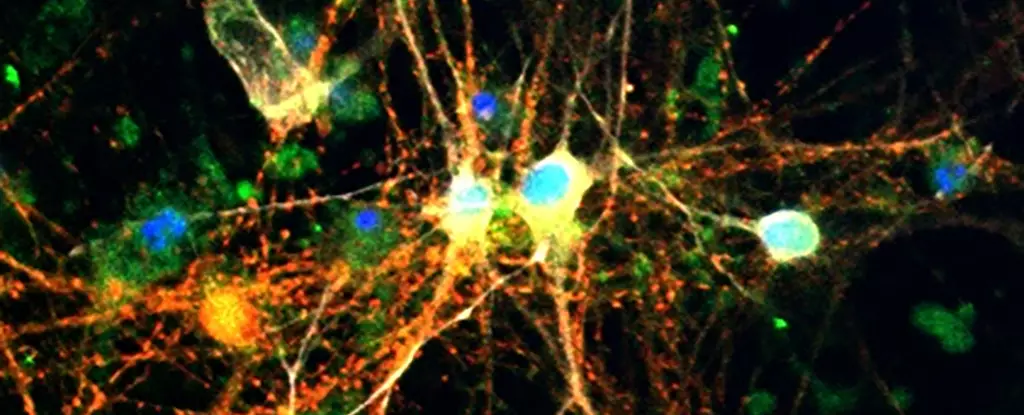For decades, scientists have long dismissed glycogen in the brain as a mere energy reserve—an auxiliary backup much like a spare tire in a car. This simplistic view framed glycogen as ancillary, insignificant compared to its vital roles in liver and muscle tissue. However, emerging research from the Buck Institute throws this assumption into question, revealing that brain glycogen may hold much more sway in neuronal health—and in the devastating processes underlying diseases like Alzheimer’s—than previously believed. If these findings hold true, we face a fundamental reevaluation of neurobiological priorities, with glycogen emerging as a central player in brain functionality and pathology.
This revelation is both invigorating and unsettling. The conventional model treats neurodegeneration as primarily a cascade of protein misfoldings, such as tau aggregation, with energy metabolism playing almost a secondary role. Now, we see that glycogen storage may be intricately intertwined with these processes, not just as a byproduct but as an active contributor to cellular deterioration. The implications for future treatments are profound, suggesting that to truly address neurodegenerative diseases, we must look inward—at the very chemicals that power daily neuronal life.
Interplay between Glycogen and Tau: A Nexus of Chaos
The crux of this groundbreaking study lies in unveiling the complex relationship between tau proteins and brain glycogen. Tauopathies—diseases characterized by harmful tau accumulations—are hallmarked by the disruption of neuronal structure and function. What is startling here is the discovery that excess glycogen, once thought benign, congregates alongside tau filaments, and that tau proteins actively interfere with the normal metabolism of glycogen within neurons.
This interference has cascading effects: molecules such as glycogen phosphorylase (GlyP), the enzyme responsible for breaking down glycogen into usable glucose, are hampered. When GlyP activity diminishes, glycogen accumulates, creating a toxic environment that accelerates neuronal damage. This vicious cycle amplifies oxidative stress and hampers the cell’s innate defenses, undermining the brain’s resilience against age-related decline. In effect, tau and glycogen don’t just coexist—they reinforce each other’s destructive tendencies.
While past research linked general energy dysregulation to neurodegeneration, this study suggests a more direct, mechanistic involvement of glycogen. It positions metabolism not as a background process but as a battlefield—one where the manipulation of glycogen pathways could turn the tide of disease.
Reimagining Therapeutic Approaches: From Diet to Drugs
The most compelling aspect of this research is its practical, translational potential. The scientists demonstrated that boosting GlyP activity in fruit fly models improved glycogen breakdown, mitigated cellular damage, and even extended lifespan. More strikingly, dietary interventions, such as low-protein regimens, yielded similar neuroprotective effects. These findings hint that simple lifestyle modifications could be harnessed as powerful tools in fighting neurodegeneration.
Furthermore, the team engineered a drug based on a molecule called 8-Br-cAMP, which mimics dietary restriction’s beneficial effects. Its success in experiments offers hope that pharmacological agents targeting glycogen metabolism could be developed to treat or prevent conditions like Alzheimer’s. This opens the possibility of repurposing existing drugs—like GLP-1 receptor agonists used for diabetes—that influence glycogen pathways, thus accelerating the path to clinical application.
More broadly, this research invites a paradigm shift: rather than focusing solely on blocking tau or clearing amyloid plaques, we might target the metabolic processes that underlie tau aggregation and neuronal death. If manipulating glycogen dynamics proves effective in humans, it could revolutionize the way neurodegenerative diseases are approached—shifting the focus from symptomatic management to addressing root biochemical processes.
A Call for Critical Reflection and a Bold Next Step
Despite the excitement, it’s vital to approach these findings with a dose of skepticism. The leap from fruit fly models to human biology is vast and fraught with challenges. While the molecular mechanisms uncovered are promising, the complexity of human neurodegeneration demands cautious optimism. Relying on dietary or pharmacological interventions targeting glycogen might oversimplify a vastly intricate disease process, and unintended consequences could arise from manipulating such fundamental cellular pathways.
Moreover, focusing heavily on glycogen might inadvertently divert attention from other critical factors, such as inflammation, vascular health, and genetic predispositions, which also play indispensable roles in neurodegeneration. While it’s tempting to pin hopes on a single metabolic target, the reality is likely to be more complex—a web of intertwined processes requiring a multifaceted approach.
This research challenges us to reimagine the brain’s energy landscape. Glycogen, once trivialized, may be the Achilles heel of neurodegeneration—an accessible target promising a new frontier in treatment. Yet, it is equally a call for rigorous validation and cautious advancement, demanding that we scrutinize our assumptions and consider the broader biological context. Only through such critical reflection can we hope to transform these insights into tangible therapies that truly change lives.


Leave a Reply